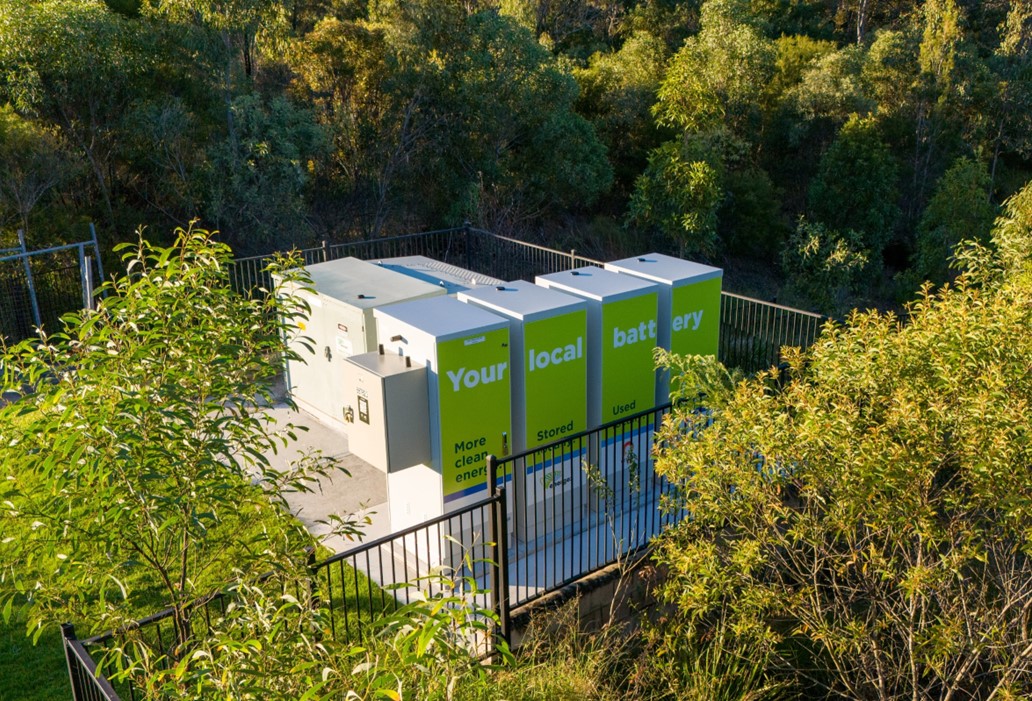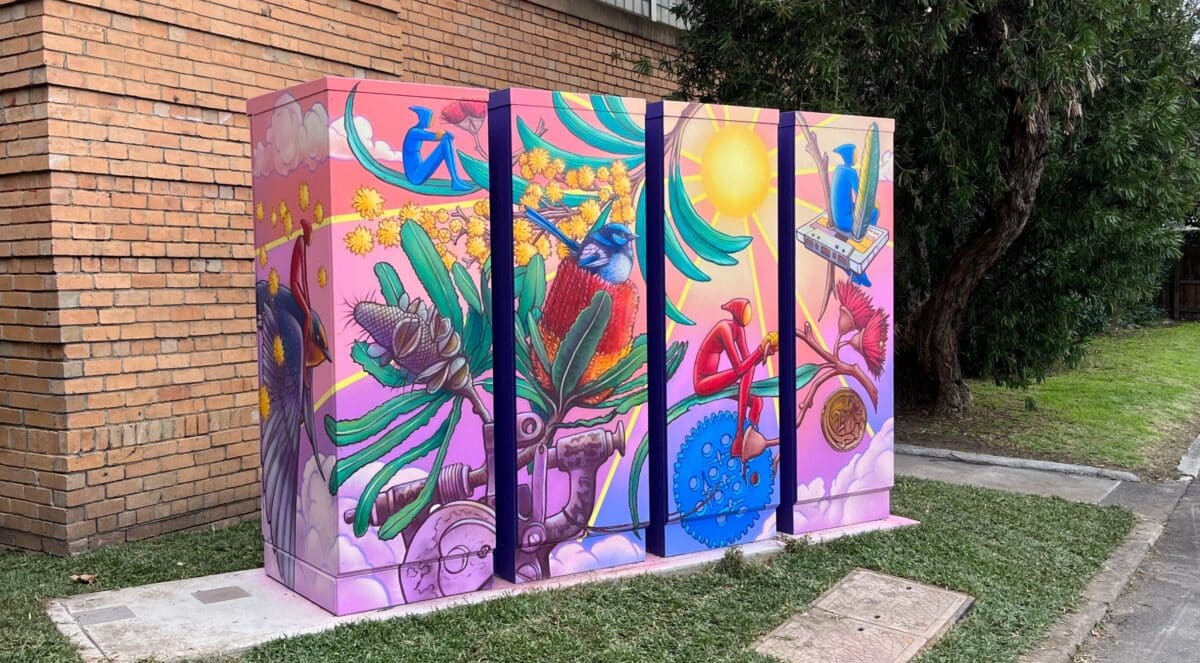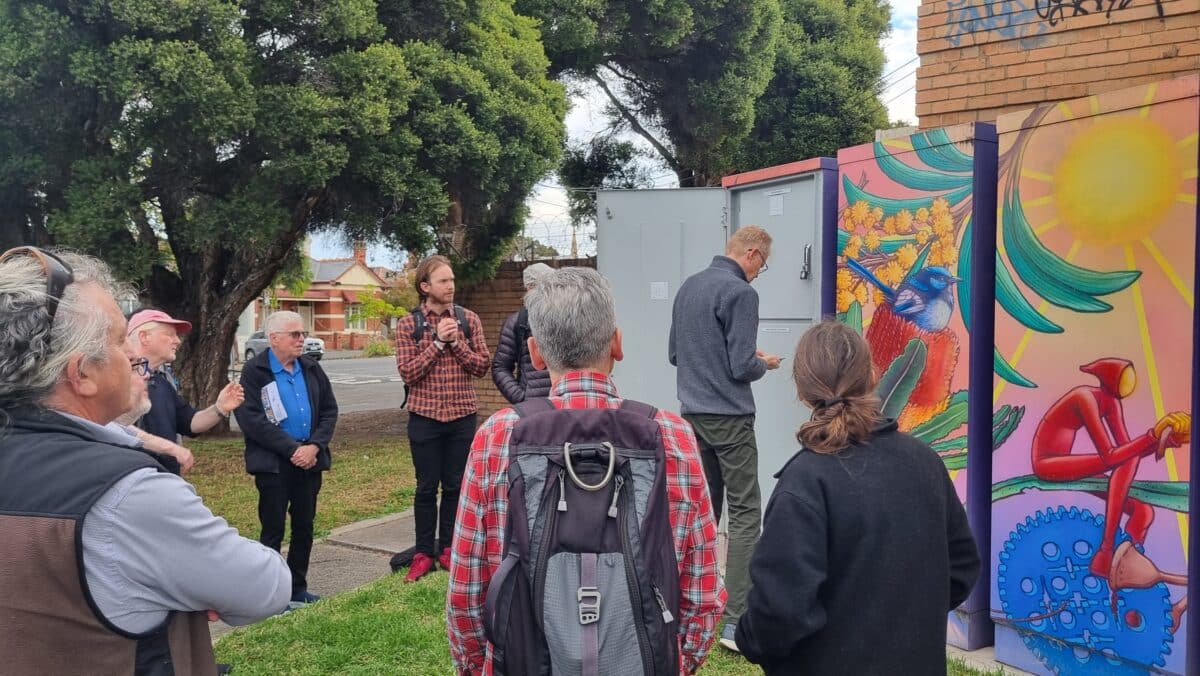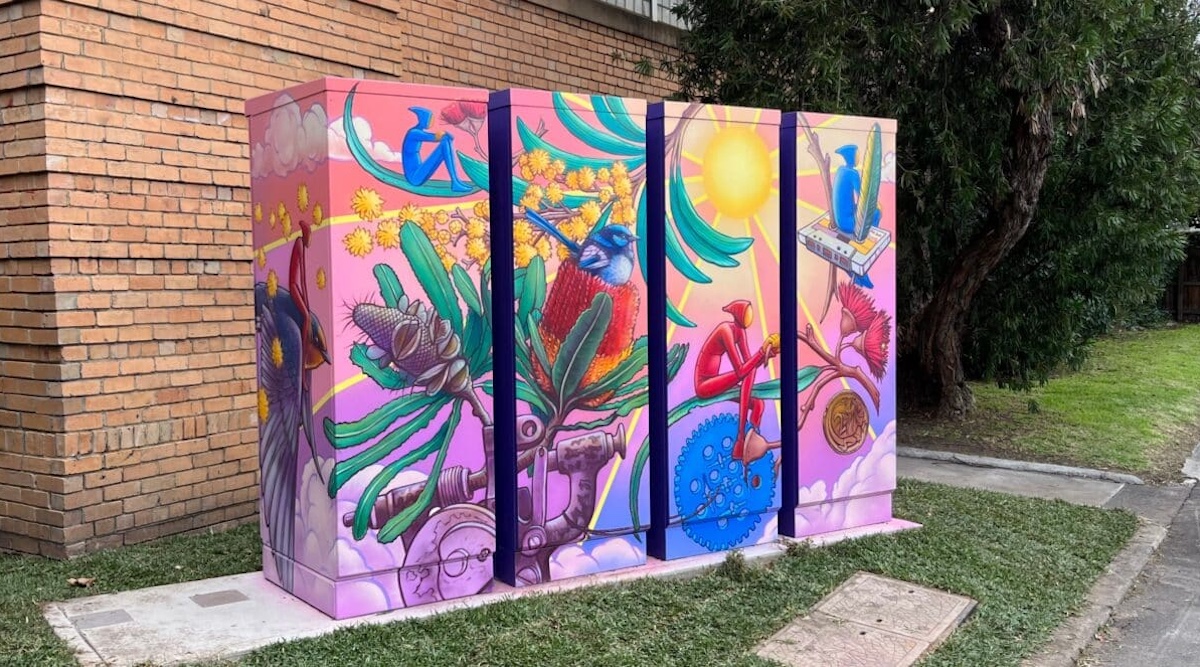
Sign up for daily news updates from CleanTechnica on email. Or follow us on Google News!
First, let me be clear: a community battery is located in the community to collect and store electricity when there is an oversupply, usually from rooftop solar. It may or may not be owned by a community organisation. Generally, it appears most are owned by the major gentailers. See our previous article on the topic here. Nevertheless, they are expected to play a role in stabilising the grid and reducing overall costs. The Australian Renewable Energy Agency explains: “Most projects are best described as ‘community-scale batteries’ in that they promote benefits for local communities without relying on community ownership or deep community engagement.”

ARENA is funding approximately 370 “community based batteries” to the tune of AU$143 million (approximately US$90 million) to be built across Australia. Expected outcomes include reducing local network constraints, particularly around rooftop solar input, reducing emissions, and reducing electricity costs for consumers. ARENA tells us that: “The range of energy consumers that will benefit from these batteries include households, hospitals, schools and tertiary education institutions, council facilities, housing developments, social and community housing, sports facilities, libraries, aquatic centres, shopping centres, and regional and remote communities.”
“ARENA is pleased to support the rollout of these batteries through our transformative program which will have a significant impact upon Australia’s energy and grid security while delivering cleaner and more cost-effective energy for our communities. We are encouraged to see this important asset class being demonstrated at such a scale, and expect that this funding round will kickstart the neighbourhood-scale storage sector,” says ARENA CEO Darren Miller. Funding has now been conditionally allocated.
The batteries so far approved will have an aggregated storage capacity of up to 281 MWh. They are expected to provide efficient distributed energy resource (DER) integration and optimisation.

Distribution network batteries are located in front of the meter, ground mounted, and located near parks and easements. Non network batteries are behind the meter (BTM) and located in areas such as retirement villages, shopping centres, and sporting facilities. They are embedded at customer premises. BTM batteries have the potential to share benefits with local community groups, including by reducing customer energy bills, funding community projects, and sharing data. Some community batteries may be competitive with residential and transmission-scale batteries on a cost-only basis.
Organisations proposed the siting of non-network batteries (BTM) at facilities such as “retirement villages (29 batteries proposed), farms, sporting complexes, schools, shopping centres (23), showgrounds, caravan parks, train stations, carparks, libraries, swimming pools (23), a childcare centre, a vineyard, a hydro-electricity facility, and a quarry. Most of these locations represent community-focused facilities and services that could significantly benefit from lower energy costs.” This, it is hoped, will achieve positive community engagement through financial benefit. Community members involved expected that these BTM batteries would improve energy equity, resilience, and rapid decarbonisation, in addition to lowering energy bills, according to research from the Australian National University. You may like to view the video here.
ARENA provided some sample case studies. One cited the value of having backup power for telecommunications in Australia’s remote areas. “When back-up power isn’t required, the batteries will operate as normal, trading in energy and FCAS markets.”
Another example provided is a battery provided for “emergency disaster support for a community refuge centre available during bushfires. The battery will also be equipped to provide EV charging during an emergency or power outages.” Australia has many wooden power poles and they burn well during bushfire season.
What about the risks so often highlighted in the mass media? Is it a bomb in the burbs, so to speak? The report tells us: “Applicants are managing fire risk both through typical fire mitigation strategies in design and construction of the sites, but often also with close collaboration with local fire services.”
What about damage? As highlighted below, the operators of the community battery in Melbourne have had to allocate significant funds to remedy vandalism from graffiti. And as I pointed out in my last article, some batteries are vulnerable to vehicle collisions. Fencing and surveillance will help, as will bollards.

A working example of a community based battery is managed by the Yarra Energy Foundation (YEF) and found in Melbourne. According to their media release, “The Fitzroy North community battery is a 120 kW / 309 kWh Pixii PowerShaper and was launched in June 2022 with funding from the Victorian Government. The battery was the first inner-urban community battery in Victoria. Over 12 months the battery charged 81 MWh and discharged 64 MWh with an average roundtrip efficiency of 79%.
“The battery generated $AU 8,423 ex-GST in revenue, the majority coming from energy arbitrage ($8,158) and a smaller portion ($1,046) from CitiPower’s bidirectional community battery trial tariff. Revenue was hampered by system downtime of 11% due to equipment and software issues, while a power spike issue prevented participation in the frequency control ancillary services (FCAS) markets.”
I contacted Timothy Shue, Chief Operating Officer of YEF, with some followup questions.
How much did the battery cost?
The project was funded up to $950,000, with $800,000 provided by the NBI grant and the remainder by contributions from YEF and CitiPower. The total cost, including in-kind work and contributions by project partners, was nearly $1.5M. Software development represented more than half of the total funded work. The total battery system cost including installation, connection, and artwork came in at about $1,100/kWh. This number is much higher than expected due to the connection and artwork costs. For the hardware alone, including installation, the cost was well below $1,000 per kWh. See page 50 of the final report for details. I was amazed at the software cost.

What is a rough estimate of return on investment?
Like any trial or pilot, the primary return on investment has been new knowledge and lessons learned about front-of-meter community batteries, which is why we are sharing this report. As a grant-funded project, profit was not a focus, rather how the battery can demonstrate operating to time-shift energy, support the local network, and enable more renewable energy in the wider system. The project has succeeded in these respects. However, the results show that we have found commercial viability for the battery challenging. We are looking forward to seeing the financial impact of participation in frequency control ancillary services markets in the third year of operations.
Who benefits from the battery — does the local community get any sort of bill relief?
Revenue from operations is reinvested into YEF’s non-profit activities, supporting the transition to cleaner energy. There is no retail arrangement between the battery and residents. The battery artwork, by local artist Hayden Dewar, has been one of the highlights for the local community, transforming what was previously a derelict space into a place where people come to learn about the energy transition and take selfies! See page 38 of the final report on how the community was engaged and involved.
After a full year of operation, YEF presented its key learnings, some of which included: Don’t do major system updates on Fridays, or just before a holiday. If there is an issue over the weekend, it is “challenging to respond rapidly.” The system needs 24/7 monitoring to identify and rectify issues.
This next learning is way outside my knowledge base, so I will quote: “Control and software issues can require complex diagnostics, development and testing — the power spikes issue was detected early in the second year and was not resolved until November 2024. Pixii’s diagnostics efforts were extensive, and development and testing of a software fix has required significant attention from their engineering teams. This has led an extended delay to commencement of FCAS trading and shows that the risk of software related challenges should not be underestimated by battery proponents.
“The financial performance of the battery could have been greatly improved if it had a more effective response to peak pricing. In FY 23–24, 11% of the battery’s revenue came from network tariffs. With greater wholesale prices for electricity during winter (the battery is in Victoria, one of Australia’s colder states) this was the most lucrative season. In summer, revenues were a net loss, due to due to the battery dispatch schedule failing to adjust to daylight savings.”
An unexpected maintenance cost has come from repeated graffiti tagging. It was expected that the tagging community would respect the artist who painted the battery and leave it alone. This has not been the case. Even though the artwork has a heavy-duty anti-graffiti coating, it has still required minor touchups.

Hopefully costs will come down as more batteries are installed and the learnings from these projects will make it easier for community-based batteries to thrive. Well done, YEF and ARENA.
Chip in a few dollars a month to help support independent cleantech coverage that helps to accelerate the cleantech revolution!
Have a tip for CleanTechnica? Want to advertise? Want to suggest a guest for our CleanTech Talk podcast? Contact us here.
Sign up for our daily newsletter for 15 new cleantech stories a day. Or sign up for our weekly one if daily is too frequent.
CleanTechnica uses affiliate links. See our policy here.
CleanTechnica’s Comment Policy

